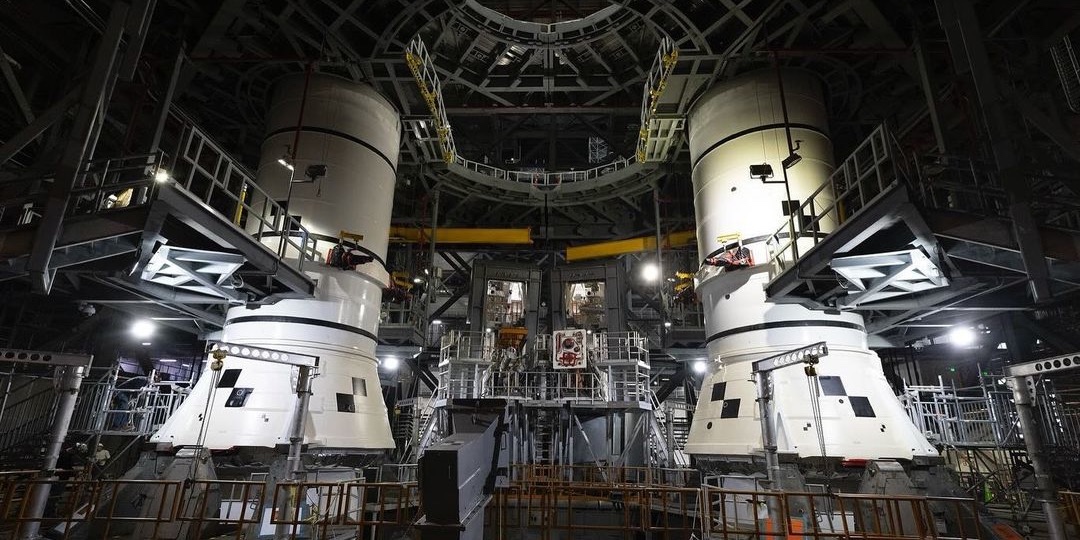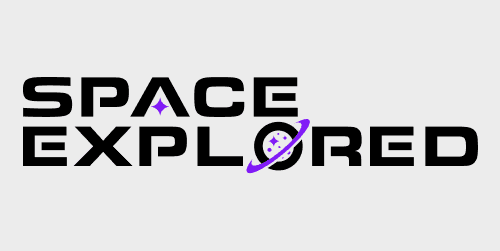
Welcome back to another edition of Terminal Count. Starship has continued to command the news cycle even after its launch last month. That will likely not change for the foreseeable future; however, NASA’s Artemis 2 mission is entering the chat with the start of SLS stacking.
This week’s launches
- December 3 (Tuesday)
- CASC | Long March 3B | Unknown Payload | 12:55 A.M. ET
- LC-2, Xichang Satellite Launch Center, China
- VKS RF | Soyuz 2.1b | Cosmos | 11:00 A.M. ET
- Plesetsk Cosmodrome, Russia
- SpaceX | Falcon 9 | Starlink Group 9-14 | 4:29 P.M. PT
- SLC-4E, Vandenberg Space Force Base, California
- ExPace | Kuaizhou 1A | Unknown Payload | 11:50 P.M. ET
- Mobile Launcher Pad, Xichang Satellite Launch Center, China
- CASC | Long March 3B | Unknown Payload | 12:55 A.M. ET
- December 4 (Wednesday)
- SpaceX | Falcon 9 | Starlink Group 6-70 | 3:29 A.M. ET
- SLC-40, Cape Canaveral Space Force Station, Florida
- ISRO | PSLV-XL | PROBA-3 | 5:38 A.M. ET
- First Launch Pad, Satish Dhawan Space Centre, India
- Arianespace | Vega C | Sentinel-1C | 4:20 P.M. ET
- ELV, Guiana Space Centre, French Guiana
- SpaceX | Falcon 9 | Starlink Group 6-70 | 3:29 A.M. ET
- December 5 (Thursday)
- SpaceX | Falcon 9 | SXM-9 | 11:10 A.M. ET
- LC-39A, Kennedy Space Center, Florida
- SpaceX | Falcon 9 | SXM-9 | 11:10 A.M. ET
- December 7 (Saturday)
- SpaceX | Falcon 9 | Starlink Group 11-2 | 1:24 P.M. PT
- SLC-4E, Vandenberg Space Force Base, California
- SpaceX | Falcon 9 | Starlink Group 11-2 | 1:24 P.M. PT
- December 8 (Sunday)
- SpaceX | Falcon 9 | Starlink Group 12-5 | 12:10 A.M. ET
- SLC-40, Cape Canaveral Space Force Station, Florida
- SpaceX | Falcon 9 | Starlink Group 12-5 | 12:10 A.M. ET
In the news…
SpaceX launched its six Starship rocket from its facility in Starbase, Texas. This mission, while missing the booster landing, was an overall success in terms of furthering Starship’s capabilities to reach orbit. The successful in-space Raptor relight means orbital flights could be on the table in the near future. [Space Explored]
SpaceX President and COO, Gwynne Shotwell, shared her thoughts on how the market will react to an operational Starship rocket. At an investor conference, the longest-serving SpaceX employee shared that she believes the market will shift from Falcon contracts to Starship for its price and added reliability, seeing the Falcon 9 and Heavy retired in less than a decade. [Space Explored]
The Space Force is expecting ULA’s NSSL debut with Vulcan to be delayed until 2025. ULA has yet to obtain certification from the Space Force, and an ongoing investigation of a solid rocket motor anomaly on the Cert-2 mission is holding up decisions. [SpaceNews]
NASA has selected SpaceX’s Falcon Heavy to launch the DragonFly mission to Saturn’s moon Titan. This will be a new challenge for SpaceX to overcome as it will require further certification by the agency to safely launch DragonFly’s radioisotope thermoelectric generator (RTG). Previously, only ULA had the certification to fly nuclear-powered missions to space for NASA. [ArsTechnica]
SpaceX cleared for Starship deluge system use
A Texas judge has sided with SpaceX in an attempt to block Starship launches from South Texas over concerns that its deluge system would damage the environment. Save RGV sued SpaceX on October 9 over the reports by CNBC that SpaceX dumped industrial wastewater into the surrounding wetlands through its deluge system. SpaceX claimed it had approval for the deluge system’s use from the Texas Commission on Environmental Quality (TCEQ), but reports showed the company did not have a permit for the system.
A judge ruled that SpaceX’s use of the deluge system without a permit was a “good faith mistake” and that without the system, Starship launches would not be safe or possible. The judge continued in his ruling that SpaceX would need to obtain a permit, a process it has already started, and that the deluge system’s environmental impact has already been investigated by the FAA and the US Fish and Wildlife Service.
NASA finally begins stacking of Artemis 2 SLS rocket
NASA teams have begun the process of stacking the massive Space Launch System rocket that will fly Artemis 2 around the Moon. The process began last month with the placement of the first segments of the left and right solid rocket boosters, which produce the majority of the thrust at liftoff, on the mobile launch platform inside the VAB.
The next step will be stacking the second of five booster segments for each side; however, that starts a one-year clock for the segment’s seals to be certified for launch. Updates from NASA can be delayed, almost by a few weeks, and no work has been shared as to whether they are moving forward with further SRB stacking to begin that clock. Furthermore, as we saw with Artemis 1, that one-year clock can be extended with waivers if the launch is delayed, which we expect to happen again with Artemis 2.
The reason why NASA begins stacking with the SRBs is that these provide the structural support for the entire rocket. These SRBs are the only part of the rocket physically bolted to the mobile launch platform. Once the SRBs are finished, then NASA can attach the Core Stage between the boosters, then the stage adapter ring, second stage, and finally Orion, which will be the home of Artemis 2’s crew for just over a week.
FTC: We use income earning auto affiliate links. More.




Comments